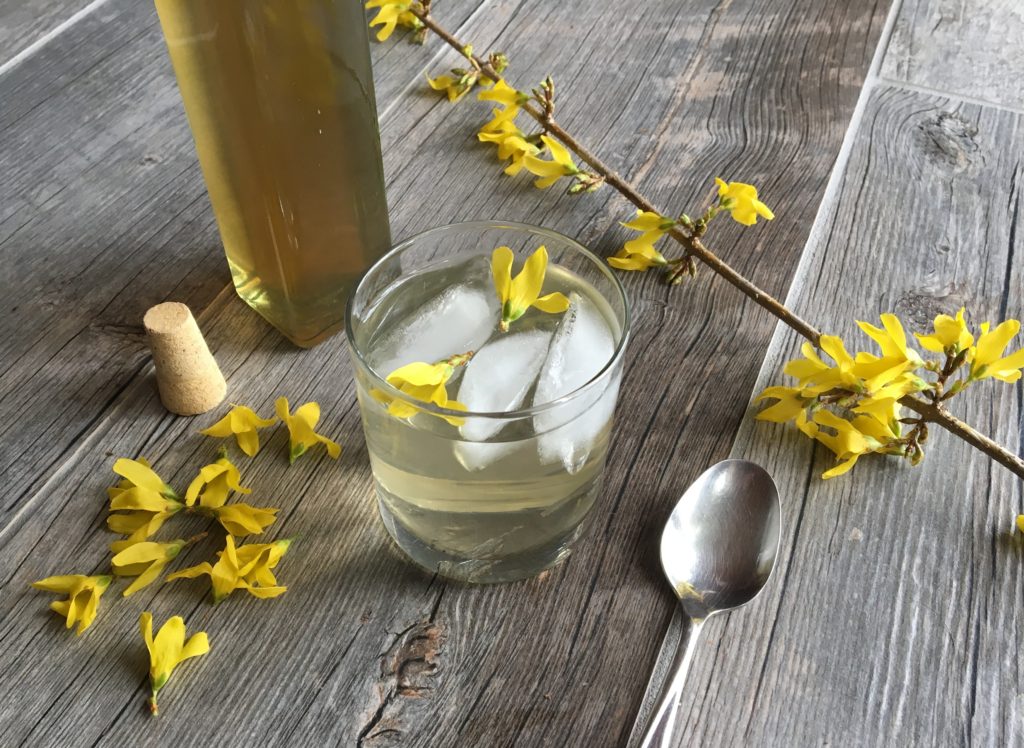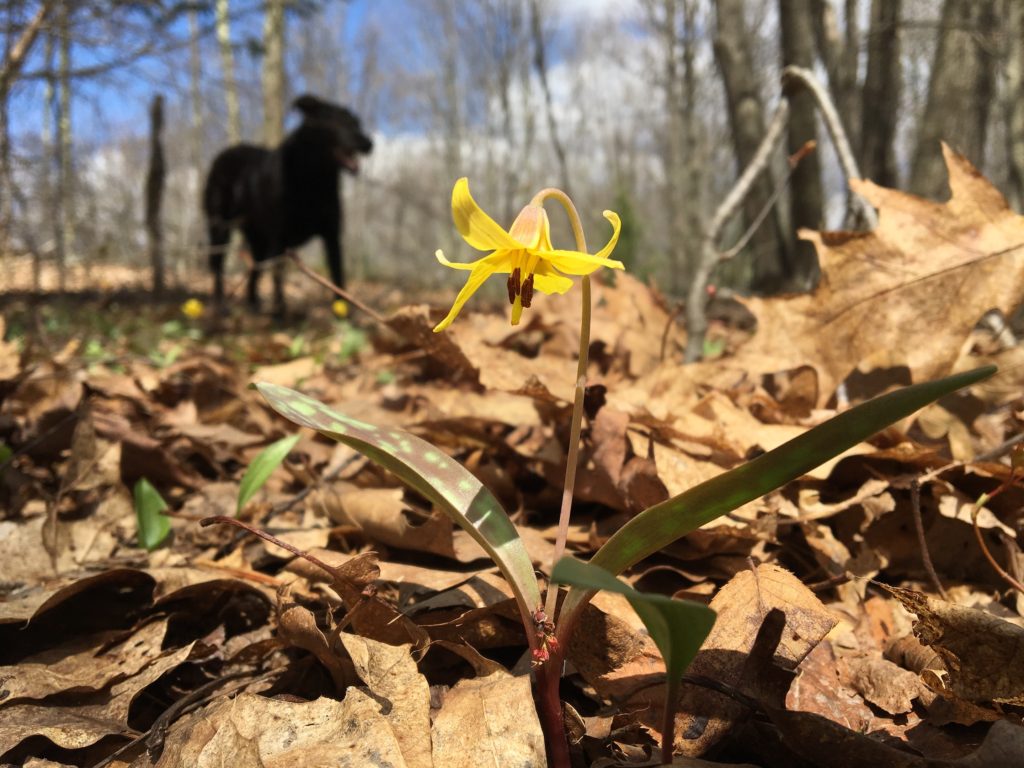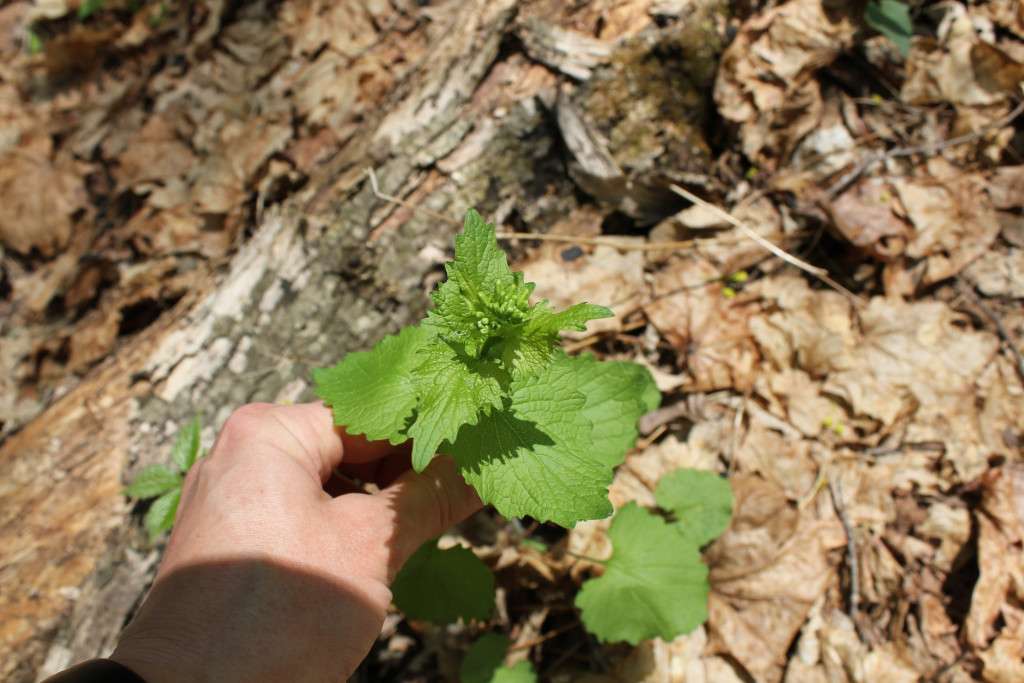
Foraging began in earnest this month at upper elevations of the Catskill Mountains. Finds: ramps (wild leeks), field garlic, young nettles, dandelion leaves, thistle roots, Japanese knotweed, cohosh and the first mushrooms of this year: morels.
Forsythia is starting to bloom at high elevations and you can make a simple syrup out of this brief bloom (pictured above). Only about 5% of our forsythia has bloomed, but those flowers probably won’t survive today’s (04/27/19) snow and low temperatures (41F).
You can do so much with young Japanese Knotweed shoots and this is a great idea because they are an invasive species. Use young knotweed like rhubarb and put it in salads, stews, fruit pies.
Rob Handel at Heather Ridge Farm makes a nettle soup that I’m still marveling about years later. Catch the grey-green, toothed leaves of nettle before they flower. They reportedly contain an extensive variety of nutrients like Vitamins, A, B, C and K; minerals like calcium, magnesium and iron; amino acids; polyphenols and carotenoids. Nettle allegedly reduces inflammation and lowers blood pressure.
Wild leeks are special and rare because their bulbs take up to ten years to mature. Take only a couple of leaves if you’re not on private land with an endless supply. Don’t rip them out by the bulb because that plant will then not grow back. Read our How To Ramp post here.

We have carpets and carpets of Trout Lily this year, but the deer love trout lilies, so most of them will not get to bloom. Last year, only three trout lilies flowered in our forest (pictured above) despite being part of a large carpet of the familiar dappled leaves. They grow in moist soils under tree canopies in hard wood forests. Some foragers eat the peeled bulbs in salads or stews.
Morels are more elusive, found mostly under trees that have recently died, like cottonwood or elm trees, or in old apple orchards, the yellow, grey and black morels are a good mushroom to find for the novice because they have a unique look, looking like a small brown or grey waffle sock when they’re young and like a beanie hat-shaped waffle sock on a stem once they grow taller. Even the toxic “false morel” found under apple trees look more like brown brains than a waffle sock. The toxic verpa mushroom does look similar to the less tasty half-free morel, but they are filled with a fluffy, cotton-type substance.

The young leaves of garlic mustard (pictured above) should be coming up now and you can make a pesto with the leaves. They are an invasive species, toxic to the larvae of native butterflies and displace wild flowers, so foragers are encouraged to pull them all before they flower and eat them.